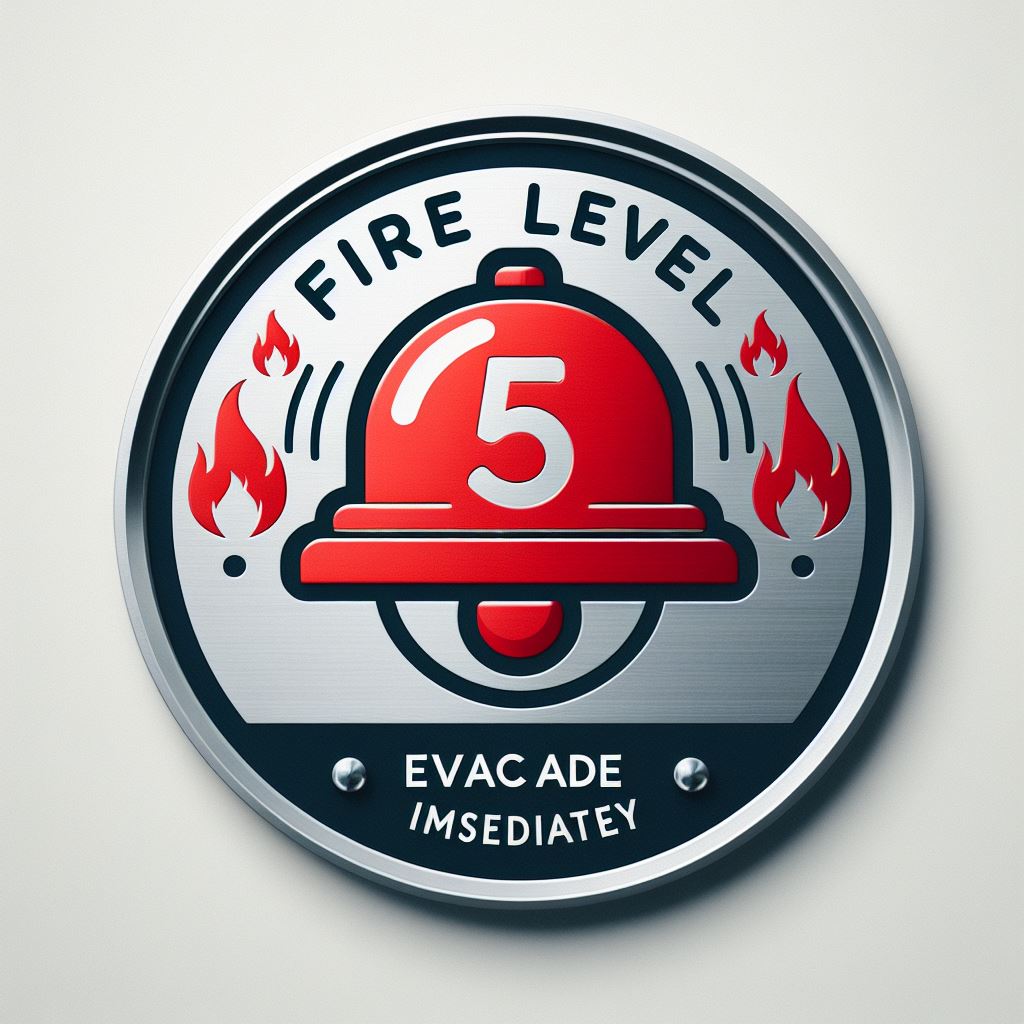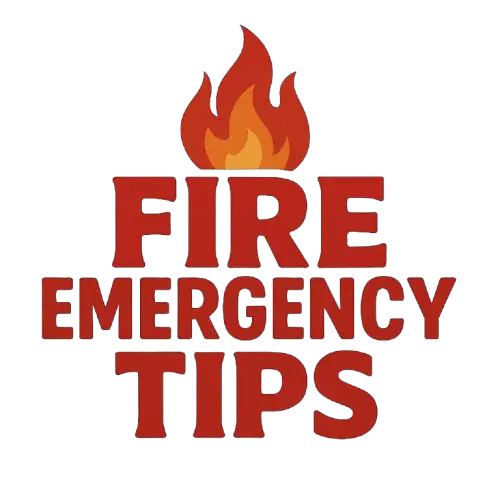
Fire safety is a crucial aspect of building management and public safety. In emergency situations, such as a fire, it is essential to have effective communication systems in place to alert and guide people to safety. Alarm fire levels, ranging from 1 to 5, play a pivotal role in conveying the severity of a fire situation and assisting emergency responders in their efforts. In this comprehensive guide, we will explore each fire alarm level, its significance, and the corresponding actions to be taken.
5 Fire Alarm Levels Explained:

Alarm Fire Level 1: Low Risk
Alarm Level 1 indicates a low-risk situation where the potential for harm is minimal. This could be a small fire that is easily containable or a situation where the fire safety systems have been activated as a precautionary measure. In Level 1, occupants are usually advised to stay calm, evacuate the area if necessary, and follow the established emergency procedures.
Alarm Fire Level 2: Moderate Risk
Level 2 signifies a more significant risk than Level 1, but the situation is still manageable. This might involve a fire that is growing but is not yet out of control. Occupants are typically directed to evacuate the building or area, and firefighting measures are initiated. Level 2 emphasizes the importance of taking the situation seriously and following evacuation procedures promptly.
Alarm Fire Level 3: High Risk
A Level 3 alarm indicates a high-risk situation where the fire is escalating, and immediate action is required. Evacuation becomes a priority, and emergency services are summoned to the scene. Level 3 underscores the urgency of the situation, urging individuals to leave the premises quickly and follow designated evacuation routes. Firefighters will deploy advanced firefighting techniques to bring the situation under control.
Alarm Fire Level 4: Very High Risk
Level 4 signifies a severe fire emergency, where the risk is very high, and the potential for harm is significant. Evacuation is critical, and emergency responders intensify their efforts to contain the fire. In Level 4, advanced firefighting equipment and strategies are employed, and additional resources may be called in to assist. This level underscores the need for a swift and orderly evacuation and highlights the gravity of the situation.
Alarm Fire Level 5: Extreme Risk
The highest level of fire alarm, Level 5, represents an extremely dangerous and potentially life-threatening situation. Evacuation is not only advised but mandatory, and emergency responders prioritize saving lives and preventing further damage. Level 5 emphasizes the critical need for coordinated efforts among emergency services, advanced firefighting tactics, and the involvement of additional resources, such as specialized firefighting teams or equipment.
Significance of Fire Alarm Levels:
Communication and Coordination:
Fire alarm levels serve as a standardized communication tool that enables emergency responders and occupants to quickly understand the severity of a fire situation. This aids in efficient coordination, ensuring that the appropriate resources are mobilized promptly.
Decision-Making:
The differentiation between fire alarm levels assists decision-makers in determining the most suitable course of action. Whether activating fire suppression systems, initiating evacuation procedures, or calling for additional support, the alarm level guides decisions crucial in managing the emergency effectively.
Occupant Safety:
The primary objective of fire alarm levels is to protect human life. By clearly indicating the level of risk, occupants can make informed decisions about their safety, such as whether to evacuate immediately or follow shelter-in-place protocols. This information empowers individuals to respond appropriately in a time-sensitive situation.
Actions and Response Protocols for Each Level:
Alarm Fire Level 1: Low Risk
- Remain calm and assess the situation.
- Follow established emergency procedures.
- Evacuate if directed to do so.
- Cooperate with emergency responders.
Alarm Fire Level 2: Moderate Risk
- Evacuate the building or area promptly.
- Use designated evacuation routes.
- Follow instructions from emergency personnel.
- Refrain from using elevators.
Alarm Fire Level 3: High Risk
- Evacuate immediately using designated routes.
- Do not re-enter the building until authorities declare it safe.
- Assist others in evacuating if possible.
- Cooperate with emergency responders.
Alarm Fire Level 4: Very High Risk
- Swift and orderly evacuation is crucial.
- Emergency responders may guide evacuation efforts.
- Avoid obstructing emergency personnel.
- Seek refuge in designated safe areas, if applicable.
Alarm Fire Level 5: Extreme Risk
- Mandatory evacuation is in effect.
- Follow emergency personnel instructions without hesitation.
- Seek shelter in designated safe zones, if available.
- Stay informed through official communication channels.
Conclusion:
Understanding fire alarm levels is paramount for effective emergency response and occupant safety. Building occupants, emergency responders, and decision-makers must be well-versed in the significance of each level and the corresponding actions required.
Regular drills and training sessions can help reinforce these protocols, ensuring a coordinated and efficient response in a fire emergency. Fire safety is a shared responsibility, and a comprehensive understanding of alarm fire levels contributes significantly to minimizing risks and protecting lives.
(FAQs) About Alarm Fire Levels:
What do Alarm Fire Levels 1 to 5 signify?
Alarm Fire Levels 1 to 5 are a standardized way of communicating the severity of a fire situation. Level 1 represents a low-risk scenario, while Level 5 indicates an extreme and potentially life-threatening emergency.
How are fire alarm levels determined?
Fire alarm levels are typically determined based on a fire’s size, intensity, and potential danger. Factors such as the rate of spread, smoke production, and the availability of resources for containment influence the assignment of an alarm level.
What should I do during a Level 1 fire alarm?
During a Level 1 fire alarm, occupants are advised to remain calm, follow established emergency procedures, and evacuate if directed. It’s essential to cooperate with emergency responders and stay informed.
When is evacuation necessary in a Level 2 fire alarm?
In a Level 2 fire alarm, evacuation becomes necessary. Occupants should leave the building or area promptly using designated evacuation routes, following instructions from emergency personnel.
What distinguishes a Level 3 fire alarm from lower levels?
A Level 3 fire alarm indicates a high-risk situation where the fire escalates. Immediate evacuation is crucial, and emergency services are summoned to the scene to contain the fire. This level emphasizes the urgency of the situation.
What actions are required during a Level 4 fire alarm?
In a Level 4 fire alarm, occupants must evacuate swiftly and orderly. Emergency responders deploy advanced firefighting techniques, and additional resources may be called in to assist in managing the severe fire emergency.
When is evacuation mandatory, as indicated by a Level 5 fire alarm?
A Level 5 fire alarm signifies an extremely dangerous and potentially life-threatening situation. Evacuation is not just advised but mandatory. Individuals must follow instructions from emergency personnel without hesitation.
How can occupants stay informed during a fire emergency?
Occupants should rely on official communication channels, such as fire alarms, public address systems, and notifications, to stay informed during a fire emergency. Following instructions from emergency responders is crucial.
What role do fire alarm levels play in decision-making during an emergency?
Fire alarm levels guide decision-makers in determining the appropriate course of action. Whether it’s activating fire suppression systems, initiating evacuation procedures, or calling for additional support, the alarm level informs critical decisions.
How can individuals contribute to fire safety in their daily lives?
Individuals can contribute to fire safety by familiarizing themselves with emergency procedures, participating in fire drills, and reporting potential fire hazards. Staying vigilant and following safety protocols can help prevent and mitigate fire risks.
